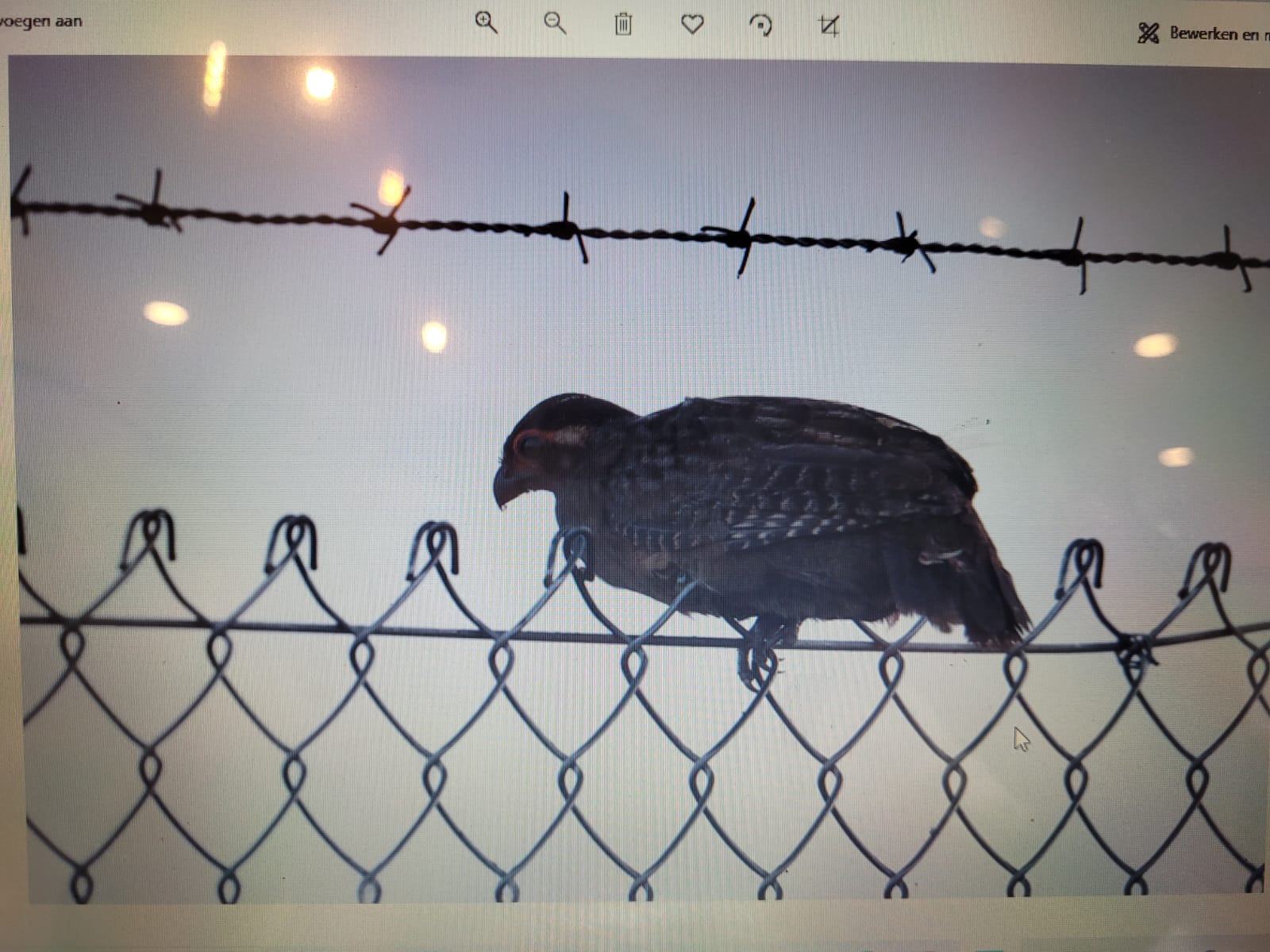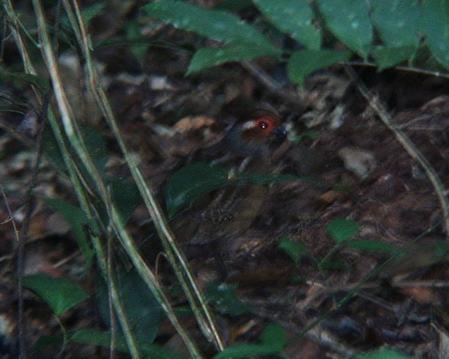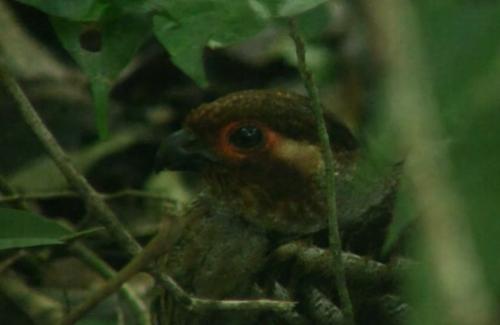 Marbled Wood-Quail (Odontophorus gujanensis)
Marbled Wood-Quail (Odontophorus gujanensis)
 Marbled Wood-Quail (Odontophorus gujanensis)
Marbled Wood-Quail (Odontophorus gujanensis) |
 |
| Pictures (click on them to enlarge) | ||
|---|---|---|
 zanderij © Michiel van den Bergh |  © Foek Chin Joe |  © Pieter de Groot Boersma |
 © IPG rangers Sipaliwini ACT |
| Marbled Woodquail: A difficult to picture bird of the forest floor. Michiel van den Bergh saw one out of the cover on Zanderij Airport The last photo was made with a camera trap by the IPG rangers in July 2015 near Kwamalasamutu, the second one was made on the Brownsberg by Foek Chin Joe in 2009. This quail stays in the cover of dark humid forest and is well camouflaged. Only the orange around its eye stands out in the picture. It walks in groups through the forest searching for fruit and insects on the ground. It is common in the rainforest in Suriname and is often heard, but I don't have a recording yet. Pieter de Groot Boersma made a still of a video of his, made on the Brownsberg in July 2011. |
|
|
||||||||||||||||||||||||||||||||||||||||||||
| Observations through the year | Observations of breeding through the year |
|---|---|
| The 168 reported observations of this bird in Suriname, mainly for the last 50 years up to 2018, have been grouped by month. More birds on one day are counted as one observation. Of course, if the graph should depict the total number of birds seen, the differences between the months could be much more pronounced. | The 1 reported breeding observations of this bird in Suriname. Most observations are about nest with eggs, some about fledglings, or feeding at a nest or the building of a nest. Of the about 5000 nests and eggs found for all species together, about 1/3 comes from the egg collection of Penard between 1896 and 1905. For some reason most collecting then was done in the first half of each year, so the shown distribution does not necessarily reflect the actual breeding preferences. The main dry season in Suriname is reckoned to be from half August to the end of November, the main wet season from half April to half August, but the the timing of begin and end does vary from year to year. Around March a second dry season often occurs. |